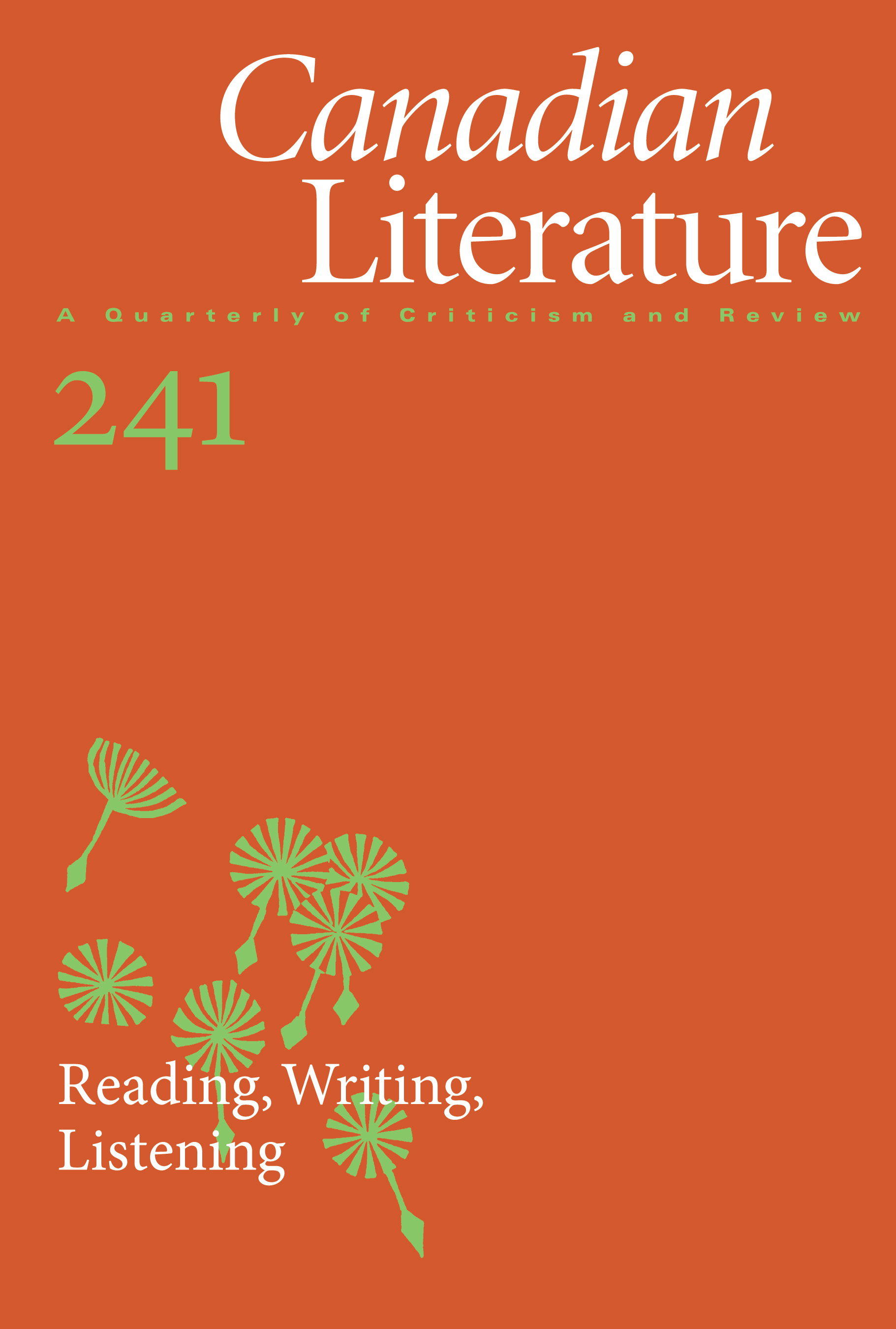A Note—Doing the Work with Metonymy
Three Insights from Canadian Theatre
DOI :
https://doi.org/10.14288/cl.vi241.192279Résumé
Building on Alicia Elliott’s exhortation to “do the work” in “CanLit is a Raging Dumpster Fire,” I pursue the metonymic after the metaphoric. In metaphor, one thing substitutes for another: the dumpster fire takes the place of the field of relations that creates the conditions for controversies and crises. In contrast, metonymy is contiguous: its readability depends on showing the conventional, assumed, or actual relationships between one thing and another. Metaphor conceals connections; metonymy works by virtue of them. Three recent Canadian plays help me think about what metonymy can add to discourse about doing the work: Daniel MacIvor’s Who Killed Spalding Gray? (2017), Jess Dobkin’s The Magic Hour (2017), and Marcus Youssef and James Long’s Winners and Losers (2015). My strategy is metonymical like “CanLit” is: I read each play for an insight it might offer within the signifying field of Canadian literature, culture, and nation.


